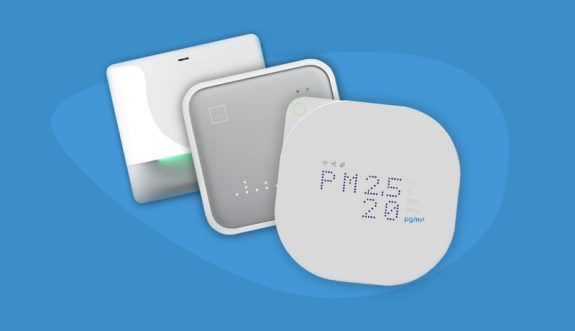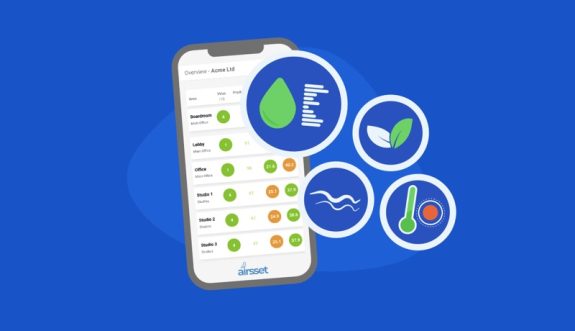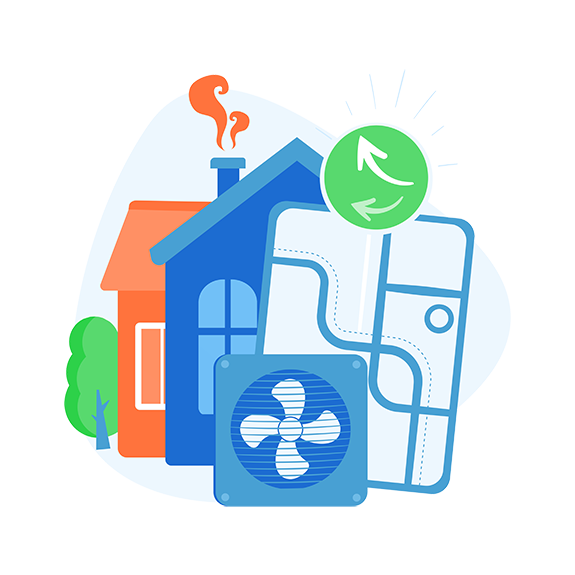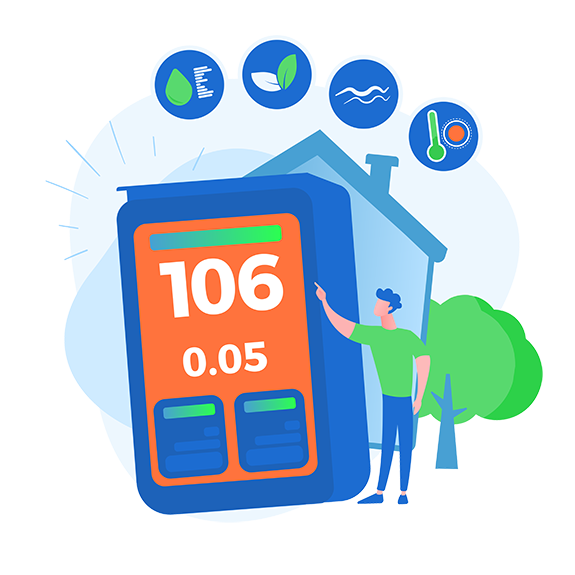
Why is it important to monitor ozone gas levels?
Only 20% to 80% of outdoor ozone levels should be found inside. However, your indoor space could have a higher concentration of ozone if you don’t have proper ventilation.
Too much ozone at ground level can lead to minor respiratory issues, such as coughing, pain in the throat and chest, as well as shortness of breath. In more serious cases, people who consistently breathe too much ozone can experience severe respiratory or lung illnesses and hospitalization.
Ozone gas is often man-made for uses like industrial oxidation, food processing, deodorizing, and medicinal practices. It can also be a dangerous by-product of UV filtration systems and certain air purifiers. If your company uses any of these applications or your building is located near a business that does, it’s important to understand your indoor ozone levels. You may also want to learn how much ozone is present outside in your area.
If your building is in a location highly affected by O3, evaluating how much ozone is in your space can be critical. Without a system that includes an ozone gas monitor, your occupants may be at risk of exposure to dangerous levels of O3 that could lead to serious health issues.
Common effects of O3
Includes mild to moderate respiratory symptoms like coughing, chest tightness, and asthma.
Severe symptoms of ozone gas
Exposure includes more serious respiratory illnesses and hospitalization.
“We wanted to optimize our workplace as well as our 3D printed models. Knowing indoor conditions was vital to that.”
Industrial 3D printing client
Protect your air quality with Airsset
Airsset can help you monitor important indoor air quality (IAQ) factors like ozone gas levels. With your Airsset device, you’ll have an ozone air quality sensor built right into your IAQ system. Your device will also provide you with alerts and access to an easy-to-use online dashboard to help you better understand your data and take action when you need to.
Start monitoring your air quality in three easy steps

1.
Measure
Connect one of our selected air quality devices to your wifi and a power source.

2.
Analyse
Know in real time about your space. Don’t worry, our experts are also looking at your data.

3.
Resolve
Combine insights and indoor air solutions to improve your spaces.
Use your data to identify and fix IAQ issues
Easily solve problems with real-time reporting
Airsset’s indoor air quality dashboards allow you to identify IAQ issues right away. No more wasted time or resources running inefficient systems or looking into problems. Armed with more data, you can resolve issues within your space faster.
Save energy and reduce costs with system optimization
Our team of advisors will provide monthly reporting and recommendations based on the data that your device collects. You can use this information to improve your indoor air quality, save on energy, or cut costs by adjusting your building control or HVAC systems.
Take action to keep your space safe with custom alerts
Know when it’s time to take action – even for something as small as opening a window. Custom alerts can also notify you of the big stuff, like if there’s a major health or virus risk in your space. Alerts can be configured per device for a single workspace or throughout your entire building.
Learn more about air quality data and how it can help you monitor your ozone gas levels.

Where O3 comes from
- Industrial oxidation
- Certain air and water purification technologies
- Medicinal and therapeutic practices
- Food processing

Ways to manage O3
- Open or close your windows at the right time using Airsset alerts
- Employ demand control ventilation using an Airsset sensor
- Update your HVAC and filtration systems
- Learn if your area has a high concentration of outdoor O3

O3 quick facts
- O3 is a highly reactive, toxic gas and major pollutant at ground level but a beneficial part of the upper atmosphere
- O3 is used for applications like oxidizing, disinfecting, and deodorizing
- O3 exposure can lead to respiratory issues and illnesses
Contact our team to learn more
Get in touch with one of our advisors to find out how Airsset can help you improve your indoor air quality.
